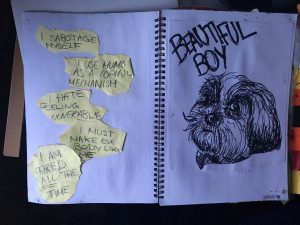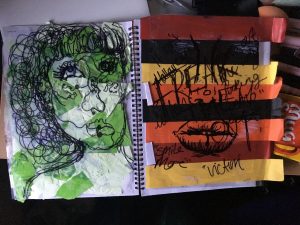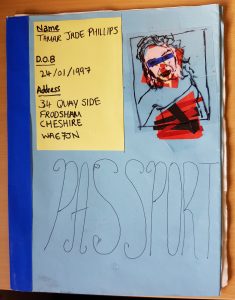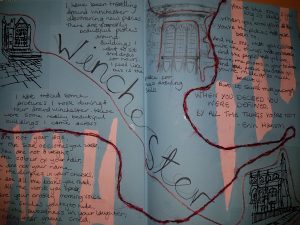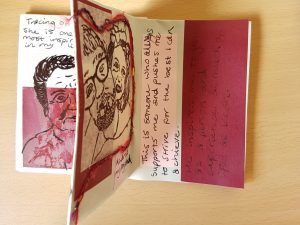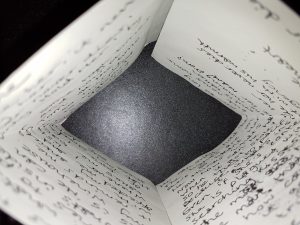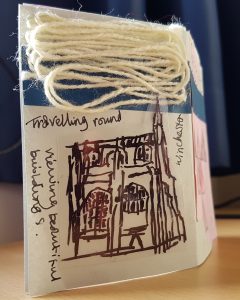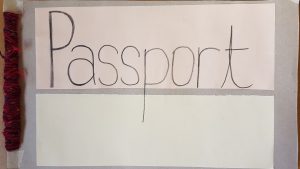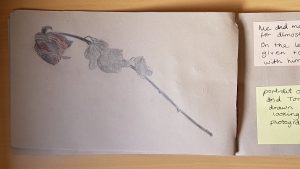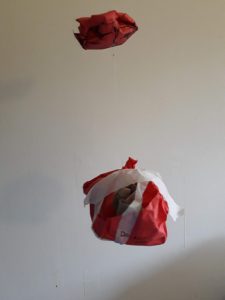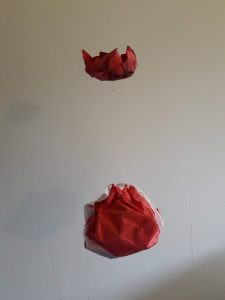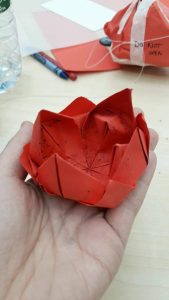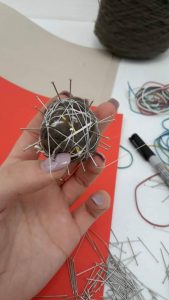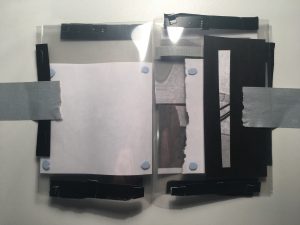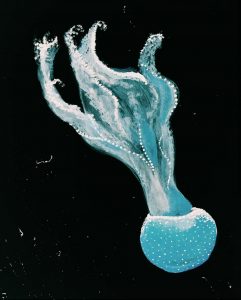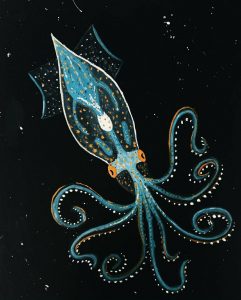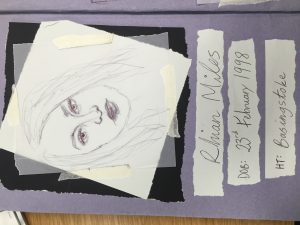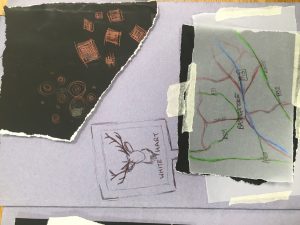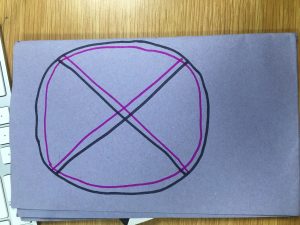This piece is a portrait of one of my favourite Youtubers Trisha Paytas. I simply decided to draw her because I admire her and find her incredibly entertaining, especially her intensely emotional vlogs and music videos. The image I chose to draw was from a music video she created named “Fat Chicks”, which I found admirable how confident she was within her body being a plus size women in a Fatphobic society. I will probably always remember the song and music video for its cheesy lyrics and bold presentation. What I find most inspiring about Trisha is how she constantly gets insulted on social media for being “Fat” and how she chooses to ignore it and has created songs and videos about her confidence with her body despite being insulted for it, I find that very inspirational and wanted to express this by drawing her portrait.
I chose to use pencil to draw my image as I felt it would be the easiest material to blend the shades of colours together efficiently, whilst also still assuring that I can make the image as detailed as possible. What I found most difficult with drawing this image was presenting the shadows of her features accurately, especially the shadows her chin forms on her neck, it took me a few attempts until I was satisfied with the shading; as I wanted it to appear as realistic as possible.
I could improve this piece by including a background and spending more time on the shading and perhaps blending the colours more thoroughly. This would then allow the detail and colour of the portrait to appear more conspicuous, although overall I am pleased with the outcome of the image. 
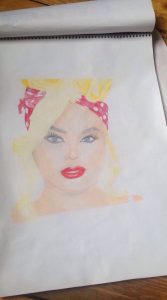
Category Archives: Fine Art
Morgan Watson, Fine Art, Task 1
From the passport brief, I began to experiment with line drawing onto acetate in order to portray the transparency of my emotions. From this, I found that the way I had used the pen in a disorganised manner does not capture the way I handle my own feelings. Although, from grappling with colour behind the acetate sheets, I found that the use of sickly green tones craft accurate connotations of the way I deal with disfunction.
From these findings, I took inspiration from Lucian Freud due to his representation of emotional existence; rather than focusing on the physical. So, using oil paint onto primed paper, I painted a portrait of myself in sickly hues of green and yellow; reflecting my struggle towards self-acceptance. The very precise nature of the brush strokes enhances my need for order and perfection, a contributing factor to the sickening colouring of the painting. It is also interesting that in the painting my eyes cannot reach the gaze of the viewer, hence exemplifying my apprehension to connect with others. Also, the fact that the gaze points upwards suggests a sense of searching for an answer from a perhaps celestial force of nature above humankind.
On the next page, I have drawn an erratic pen drawing of my dog in order to portray his excitable behaviour and innocent naivety, of which provides a sense of love and security in my life.
Tamar Phillips S1 Task 1 Fine Art
It was asked of us to create a ‘passport’ however the information given as to what that might entail was minimal. This allowed room for us to be as personal or impersonal as we wished and gave each of us a great amount of freedom.
For me the passport began with a booklet slightly smaller than an A5 sheet of paper, made up of four pages. This was overall unsuccessful, the colour scheme didn’t work as it wasn’t reflective of my personality and this fuelled the childlike appearance of the work. I would say it bares resemblance to a scrapbook a child might make at a craft club.
I then created a much smaller booklet in the same style as the first, in this I included tracings on acetate and masking tape from images on my phone. The reverse of this booklet hides song lyrics with a personal meaning behind them as well as an explanation intended to be concealed. I hoped to explore how the visibility of the material used for tracing could disguise the true characters of those depicted.
Currently I am working on a passport that includes drawings without the use of trace, information on the relevance of the sketches is also specified. I hope to include song lyrics and poetry in this booklet as I have with the previous two to help express my feelings. I feel as though my next step could be leaning more towards something three-dimensional, influenced by some of the work we all looked at collectively, which was produced by colleagues of mine.
Task 1
The brief we were given on 26th September was to create a passport with which, a form of my identity is displayed using various mediums. Immediately I intended to use elastic bands, wool, thread, nails, and hair (for physical identity), using textures to create a messy, unfinished product, representing the unfinished aspect of growth as an aging adolescent.
Somewhat resembling Tadek Beutlich’s work, I began building layers of elastic bands and wool. I then inserted flat-headed pins into the structure to symbolise an intimidating exterior.
Tadek Beutlich- (Vibrations 6)/Feltbug, 1984
Content with the size and shape of my passport, I used thread woven within it as a medium of suspension, to further represent the fragility of life.
Finally, the structure was impulsively wrapped in red paper -leaving the thread as a means of presentation. Held together with masking tape, to show a visible attempt at containing the structure, the words ‘DO NOT OPEN’ were written, cautioning those of the distorted interior.
Single-line blind contours were drawn on another piece of red paper depicting personal things of importance and folded it into an origami lotus flower, distorting the images by folds and drawing technique. This was suspended just above my passport, as though personifying the brain (memories), and soul (feelings).
Approaching this task again, I would pour white paint over the mass of elastic bands and nails to conceal it rather than use paper to completely mask the object; thus, representing how the private side of myself is hidden but not entirely submerged.
Task 1 – Idea Development

‘Trace’ Passport taped down such that only a portion is visible, symbolic of the idea that more lies beneath the surface than meets the eye yet is somewhat concealed (considering ways of presenting oneself)
My initial thought when presented with the passport project, ‘Trace’ was obscurity. Somewhat ironically perhaps, given the brief was to open up and present ourselves to the group in order for us to better know one another. Feeling hesitant to reveal the most important and personal details of my life to a room of strangers, I decided instead to play with the notions of transparency and openness, using materials of various opacities, such as acetate and tracing paper.
I began with a drawing of some personal belongings, which I then distorted and manipulated using the photocopier, until the image had been altered completely to become something else entirely – a collection of abstract forms in space. I embraced the spontaneity and unpredictability of the process and was pleasantly surprised by the results. I then used these obscured images to create my coded passport.
Considering the typical style and format of a passport, I chose to create a zine-like booklet from a single sheet of A4 acetate, folded to create eight sides and taped around the edges to hold in place. I liked the slapdash, informal tone set by this way of making and by the use of the photocopier, often referred to as ‘lo-fi’ or low fidelity for its deliberate and distinctive style.
I am really interested in further exploring zine-making – in terms of content, the lo-fi aesthetic, the DIY processes of making and ‘zine culture’ in a more general sense. I would be keen to consider other ways of printing and image transfer processes and could develop this work by using a risograph printer instead of a photocopier. I plan to continue to look at image abstraction and stylisation, as it continues to play an integral role in my practice.
Megan Fragopulu – Fine Art // Task 1
These are some A4 paintings I did as part of my final project in my foundation course at college, where I researched water pollution and climate change to raise awareness of the effects it has on the planet. This led me to find photographs of deep sea creatures by Fabien Michenet.
I started by experimenting with a few materials and found that I liked the look of using acrylic paint on plywood the best because of how the wood soaked up the acrylic paint which I could layer up and get the desired effect of transparency in some areas of the sea creatures bodies like in the photographs.
I began by painting the plywood with a couple layers of black acrylic paint then once that was dry, doing a faint wash of blue in the shape of the animal and started adding more paint to the darker areas of their bodies. I really wanted the paintings to be eye catching so I used white paint to add small details to really make them stand out and remind the audience of what we would lose if water pollution and climate change continues to increase.
In the future I would like to experiment with doing larger pieces of work because I usually choose to work quite small. I also think my work would have more of an impact if it was larger.
Task 1.
“Traced” is the title name lecturer Andrew Carnie gave to us for a beginning to our first piece of work made at Winchester School of Art known as the passport project. The brief of which is self-explanatory, an identity art piece in which you get to tell other students about yourself using creative media.
Andrew demonstrated a straight forward technique on how to fold paper in to a little booklet like that of a passport, a technique I decided to use to start with. I then set the handmade book aside and focused more on what I wanted to put inside it. Thinking about words, drawings and collages, I started with a self-portrait. I picked out some tracing paper and traced an image of myself from my phone, a technique I would not normally go for as I find it better as a practicing artist to free hand, but felt it fit with the title Andrew gave us. I liked the outcome, a simple black and white traced image of myself, it stands out on the first page as a very literal piece about myself.
I was then stuck for ideas; did I want to be so open about myself in a little book made to present to a group of people I don’t really know? With this pondering came the 4th page of my passport, a sort of doodle page which expressed quite a lot about myself, my anxiety. In big bold words on a turned over page as if its hidden from everyone are the words ‘Struggle is good!’ a lecturer from my foundation course used to say to me and has stuck with me as important words to remember as an art student.
On the rest of the pages I decided to put little things to do with myself such as my date of birth, my hometown and a thought bubble of little things that make up my identity. On the front page I kept It simple like a passport, with the title and my name. The back page has a big stop sign on it to indicate the end and my knowing of where to stop as sometimes in art we get a little lost and don’t always know when to call an art piece finished.
Overall, I consider my passport finished, however there are many things I could do to improve it such as adding a few more details about myself. I took quite a literal approach to the passport idea and feel while it has little bits and pieces of my identity, it doesn’t really say much about my art style and whilst it was a really enjoyable little project, my interpretation of it feels quite adolescent when there were many other outcomes I could of done to suit my personal aesthetic.


